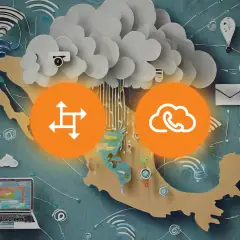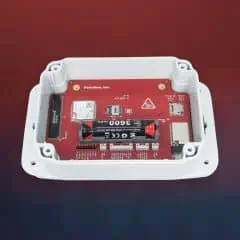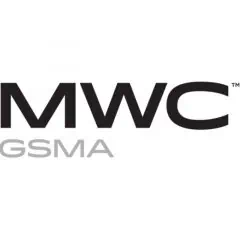Send SMS notifications to customers via Add-On Mart (Twilio)
Now, there’s a simple way to set up SMS notifications for your customers when you need to remind them about billing or other important events. SMS notifications have high deliverability, so they allow you to notify customers promptly and reliably. They also tend to elicit a faster customer response than email, making them a good option for enforcing the payment collection process. For example, when an invoice due date is approaching, the customer automatically receives an SMS notification reminding them to make payment.
Now, the possibility to send SMS notifications is available via the Add-on Mart. The current integration is based on Twilio, and integrations with other SMS providers are planned for the future.
The integration will work with any system version, with no need for a full system update. Simply sign up for an account with the SMS provider and subscribe to the corresponding Add-on Mart module, and the integration will be set up by our PortaOne engineers.
Once the integration is set up, you will be able to pick which events are important enough to send an SMS notification (for example, if a customer’s credit limit is exceeded, or an invoice becomes overdue) and customize the notification text (this is done on the customer class level).
Sending SMS via an Add-on Mart integration utilizes modern REST APIs offered by CPaaS providers like Twilio. This means a connection can be set up very quickly, and it is easy to troubleshoot, with little room for errors. This makes it a much simpler alternative to the existing method of sending SMS notifications through a “traditional” SMS carrier via PortaSIP using the SMPP protocol – connections that are difficult to set up and tedious troubleshoot.
Most importantly, the Add-on Mart architecture makes it very easy to add an SMS module based on another CPaaS provider or modern SMS carrier that offers API (such as HTTP REST). If you want to see a particular SMS provider added to the list of options in the Add-on Mart, contact our sales team.
What’s improved?
Better customer relationship management
Quickly set up automated SMS notifications for customers.
Find more details here.
Tax assessment via Compliance Solutions, Inc.
With MR104, you can now assess taxes via the Compliance Solutions, Inc. (CSI) tax management company. CSI offers tax assessment and reporting at the federal, state, county, and local levels and can be used as an alternative to companies such as SureTax and Avalara.
CSI integration is available via the Add-on Mart. Once you subscribe to the CSI module, PortaOne engineers will activate the CSI taxation plug-in. Then, simply select it on the PortaBilling web interface and configure the assessment of the transaction taxes, per-line taxes, and surcharges (e.g., the Universal Service Fund fee) as needed.
What’s improved?
Tax processing agility
Use the CSI taxation company for tax assessing and reporting.
Find more details here.
Provide a better call-queue experience
Customers are used to being placed in a call queue when they call a company – but when that wait gets too long, many just hang up. Now, enterprises using your PBX service can provide better service to their customers by offering callers an alternative option to waiting, e.g., leaving a voicemail or transferring the call to another department (queue).
Say a customer named John calls “ABC Company” and all agents are busy. John hears a standard message telling him that he is fourth in the queue, and the expected waiting time is 8 minutes. After waiting on hold for 3 minutes (a predefined period set by the ABC administrator), John hears an additional message telling him that he can continue to wait, or press 0 to leave a voicemail. John presses 0, leaves his request and contact information, hangs up, and then goes about his day. Later, John receives a return call from an ABC representative, who proceeds to help him with his request.
A message offering the option to leave a voicemail (or take some other action) can also be played for callers when an agent does not pick up the call or when the call queue is full (for example, if the maximum number of calls set on hold is 100, and the 101st call arrives). The actions for all these cases can be configured to the business’s preferences on the customer self-care interface.
What’s improved?
Enhanced caller handling in a call queue
Users of PBX service, based on PortaSwitch, can provide better customer service and have a lower call abandonment rate.
Find more details here.
Provide improved clarity on call disconnection causes
Previously, only a generic call disconnection cause was sent to the calling/called party, and the real disconnection cause returned by your interconnect partner, e.g., an external gateway, was lost. Thus, your customers couldn’t always know what specific disconnection cause was behind a generic SIP error, leaving room for ambiguity in the interpretation. For example, the SIP error “404 Not Found” could be interpreted that a call failed due to an incorrectly dialed phone number while, actually, it failed due to an error on the vendor’s side.
With this feature, your customers will receive the real disconnection codes transmitted in the “Reason” header in SIP messages. These codes allow the customers to accurately identify the cause for each call disconnection.
Say your SIP trunking customer makes a call from their PBX, and a vendor’s gateway ends the connection, indicating the disconnection reason with a specific code, e.g., 1. When PortaSIP sends the SIP message to the PBX, it passes on this code, which represents “unallocated (unassigned) number.”
The received disconnection codes empower customers such as call centers to build accurate reports based on the call disconnection reasons, allowing them, for example, to monitor how many calls are not picked up or are hung up and how many are disconnected due to error.
What’s improved?
Improved customer experience
Customers are able to build accurate reports on call disconnections.
Find more details here.
Store comprehensive “disconnect causes” data in PortaBilling
You can also now have comprehensive information on the call disconnect causes returned by your interconnect partners in your system.
The real call disconnection causes, e.g., those provided by an external gateway, are now not only passed on to the calling/called party, they are also stored in the call data (CDR) in PortaBilling. This gives you access to accurate disconnection causes, allowing you to partner with your customers or vendors to analyze these causes, for example, when a new customer wants to test the service and reconcile the call data in PortaBilling with the data on their side.
What’s improved?
Save time on troubleshooting
Your engineering team can manage reconciliations with customers or vendors more quickly and with less investigation.
Find more details here.
New reseller self-care web interface
Starting with MR104, reseller profiles are automatically switched to the new self-care web interface. This updated version offers the same functionality of the old reseller interface, but is more user-friendly and shares a similar look with the administrator’s web interface.
The old version will be completely removed in 2024.
What’s improved?
Easier administration for resellers
Resellers can use a new, more user-friendly self-care web interface.
Find more details here.
Simplified authentication when testing API methods
Your developers can now test PortaBilling API methods on the built-in API documentation page with no need to acquire and enter an access token.
Say a developer wants to test an API method from a specific realm – for example, as an administrator or a reseller. If the developer is already logged in to the corresponding PortaBilling web interface in the same window of their web browser, they can test the API method right away once they open the built-in API documentation page. If the developer is not logged in, they will need to run the “Session/login” request with the corresponding credentials. The access token is then acquired from the “Session/login” method and used for authentication automatically.
What’s improved?
Simplified access to API testing for developers
There is no longer a need to acquire and enter an access token when testing API methods.
Find more details here.
Additional clarity for the “Batch account update” panel
When you open the list of accounts and launch the “Batch account update” side panel by applying a “batch” filter, the selected batch name will now be additionally displayed at the top of the panel, giving you more control when applying new settings to accounts.
If you use additional filtering criteria for accounts in a batch, you can also see how many accounts will be affected by the update (for example, “Selected accounts: 1531 out of 53756”).
This panel can also be used to quickly find out how many accounts in a batch have been used at least once (“Started”) and how many accounts have been used up (“Depleted”). For example, for a selected batch, in one glance you can see that the total number of accounts is 53756 and, within that batch, 7916 are “Started” and 9826 are “Depleted.”
What’s improved?
Easier administration
Find information faster when managing account batches.
Find more details here.


















